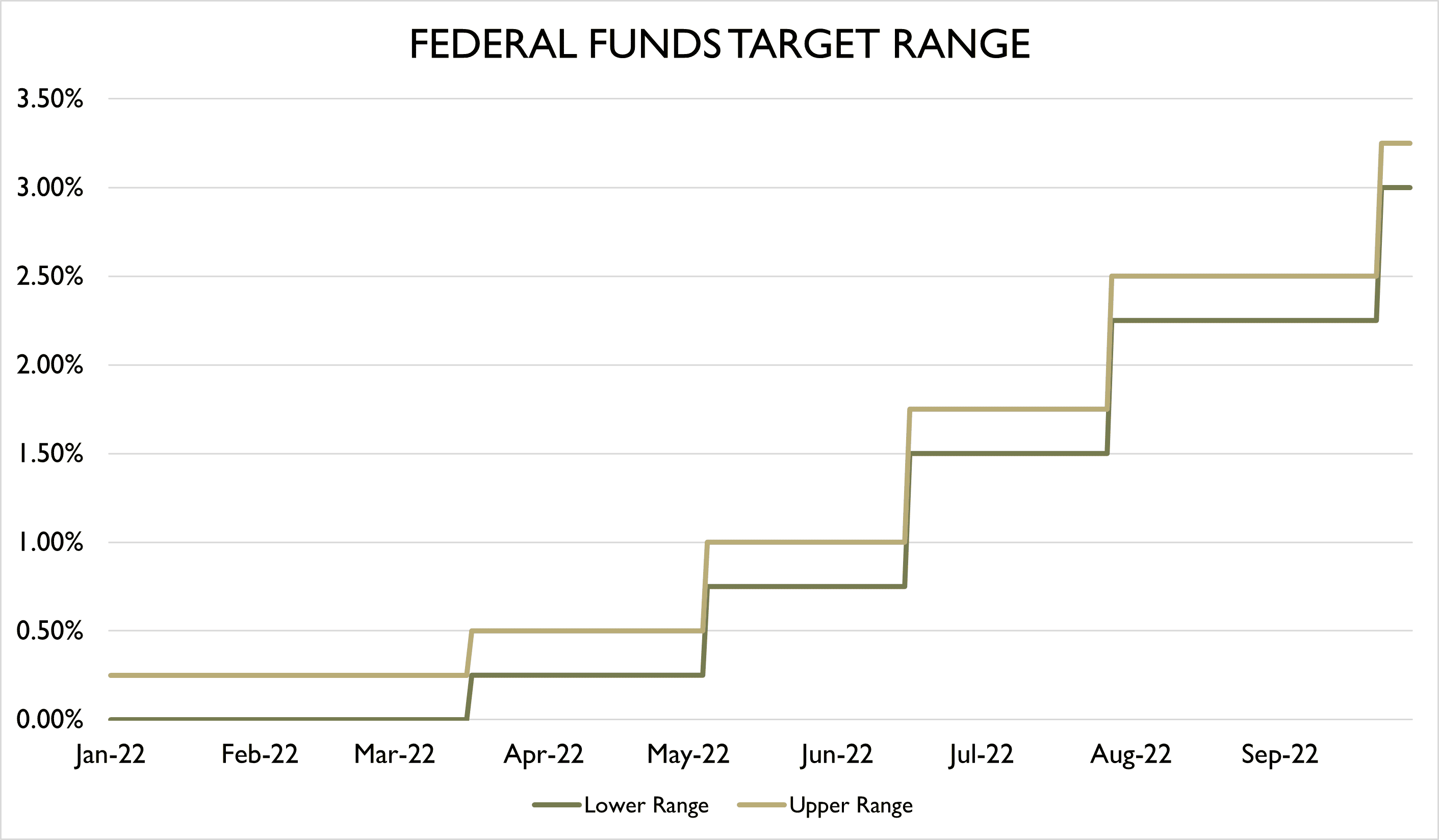The market volatility that caused investors to experience strong losses in early 2022 has returned, driving the S&P 500 to new lows for the year on Monday, September 27. Whenever there is volatility, it's helpful to ground the emotions we may feel in context. Here's a brief look at how we got to this point.
Causes of Increased Inflation and Volatility
Markets entered 2022 with concerns about whether inflation was going to prove to be persistent or transitory, and two events early in the year exacerbated this important issue. First, the strict COVID-19 lockdowns put in place throughout China caused greater delays in global supply chains. This was followed by the war in Ukraine, driving global commodity prices quickly higher. As a result, the Federal Reserve has been forced to react quickly, raising the Federal Funds benchmark rate five times so far this year. Remember: this key rate was at 0% entering the year, and now sits just above 3%, a significant rise over a short period of time.1 Markets are now pricing in another 1.5% increase in the Federal Funds rate, to 4.5% by early 2023,2 and trying to understand whether the global economy can absorb these rapidly tightening financial conditions without entering a recession. Below is a visual of just how high and how quickly the Federal Funds rate has increased since March 2022.

Superior Outcomes Over Time
As long-term investors, we know that the short-term noise can be emotionally stressful, even with helpful context. But it's important to remember that market volatility actually provides us with opportunities to be proactive. Our Investment Team is hard at work rebalancing portfolios, in most cases selling fixed income to purchase stocks at discounted prices and capturing tax loss harvesting opportunities where applicable. We know that these opportunities to be proactive allow us to produce superior outcomes over time, which strengthens clients' financial plans and lowers the taxes they pay.
Remain Focused
As was emphasized in our recent webinar with Morgan Housel, successful investing depends not just on what you own, but in how you react to the emotional challenges presented by market volatility. Negative volatility is stressful, and we anticipate it will continue throughout the remainder of the year. It’s important to keep in mind that newspaper headlines and market prognosticators will be using this opportunity to play into the fearful emotions that investors are feeling. Our advice is to look past the noise and remain focused on your long-term financial goals, which are the focal point of your financial plan, and remember that this plan has already been stress tested for conditions exactly like what we’re experiencing today. Volatility is certainly unnerving, but we expect that disciplined investors will be well rewarded in the years ahead.
- Federal Reserve Bank of New York. Effective Funds Rate (EFFR) for the time period of January 1, 2022 – September 28, 2022.
- Federal Reserve Bank of New York. Effective Funds Rate (EFFR) for the time period of January 1, 2022 – September 28, 2022. Calculations are based on end of day closing prices from the FactSet Futures Prices Database.
NOTE: The information provided in this article is intended for clients of Carlson Capital Management. We recommend that individuals consult with a professional adviser familiar with their particular situation for advice concerning specific investment, accounting, tax, and legal matters before taking any action.

